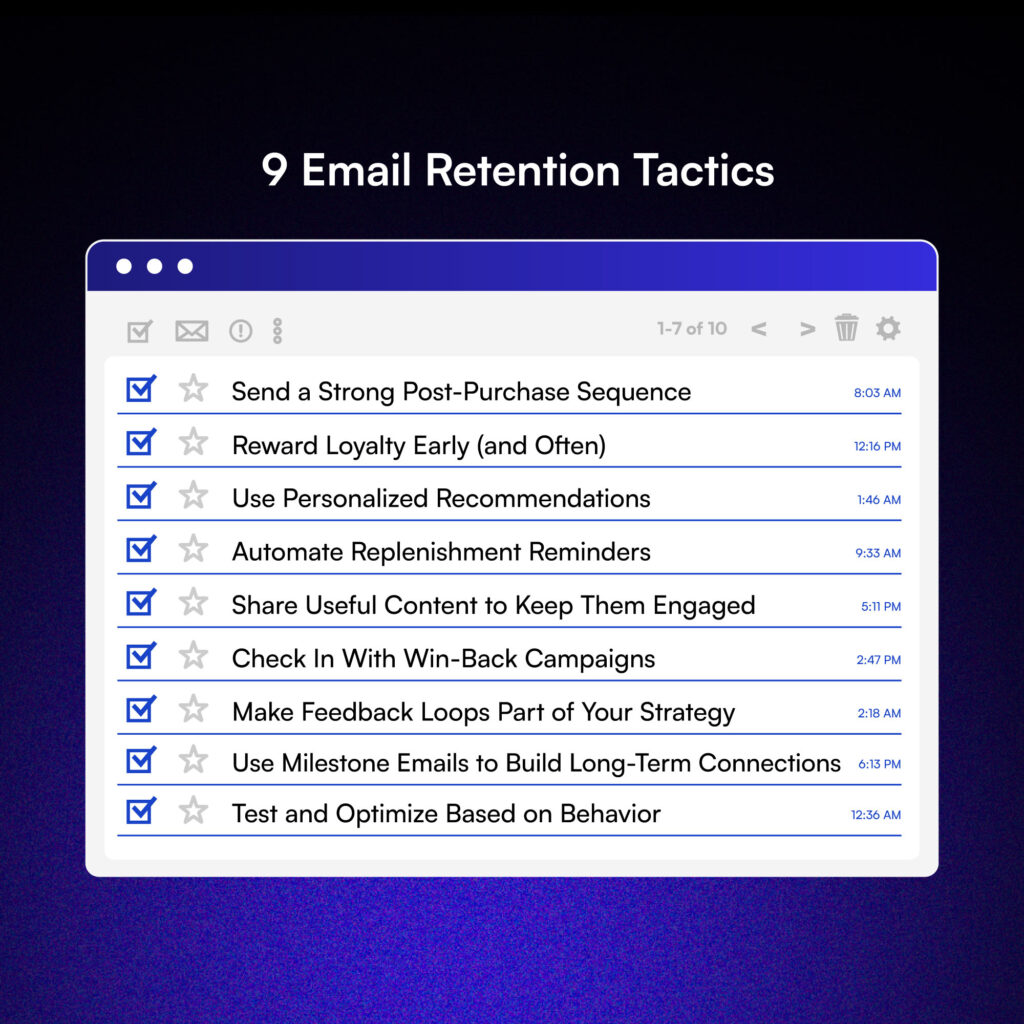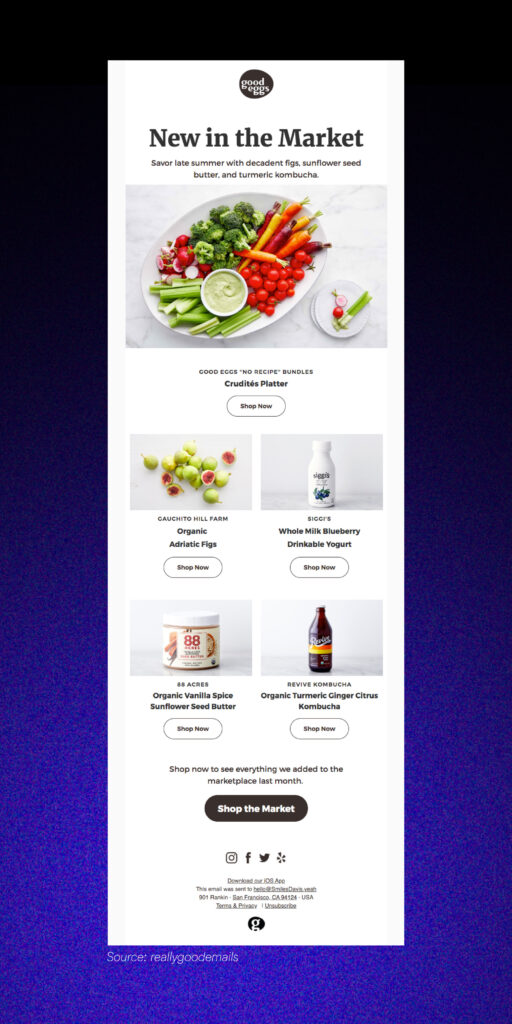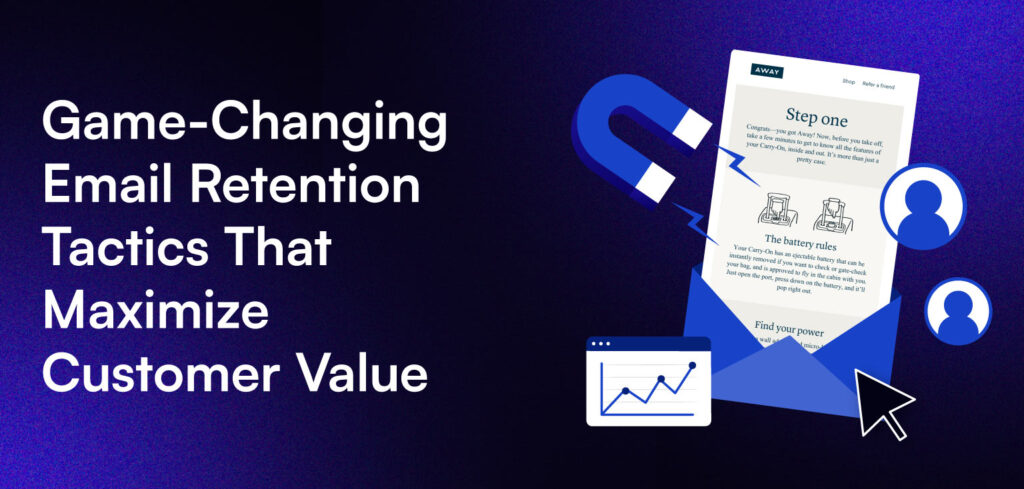Acquiring a new customer is great, but keeping one?
That’s where real growth happens.
Retention isn’t just cheaper than acquisition; it’s smarter. Loyal customers spend more, refer others, and fuel long-term success.
But here’s the catch: retaining customers takes more than a good product. You need consistent communication, meaningful touchpoints, and a strategy that nurtures the relationship well beyond the first sale.
That’s where email comes in.
Done right, email retention marketing keeps your brand top of mind without being intrusive. It helps you celebrate wins, offer value, and turn casual buyers into lifelong fans.
The best part?
Most of it can be automated and personalized at scale. In this blog, we’ll walk you through the best email retention tactics that move the needle – no gimmicks, just solid strategy.
9 Email Retention Tactics To Maximize Customer Value

When done right, email retention keeps your brand top-of-mind and gives customers a reason to come back, again and again.
So, how do you actually pull that off?
Below are nine proven email retention tactics that help you build trust, drive repeat purchases, and turn one-time buyers into lifelong fans.
1. Send a Strong Post-Purchase Sequence
Your customer just bought something, but that’s not the end of the story; it’s the beginning of your next one.
A solid post-purchase sequence keeps the momentum going. It reassures your customer that they made the right decision and gets them excited to engage again.
Start with a thank you email that’s more than just polite. Make it feel personal. Follow up with helpful onboarding content, care tips, or “how to get the most out of your product” advice. This kind of value builds confidence, reduces returns, and paves the way for repeat business.
Pro tip: Don’t cram it all in one email. Spread your content across 2–3 emails over a few days to keep the engagement going.
2. Reward Loyalty Early (and Often)

Loyalty doesn’t start after the fifth purchase, it starts when a customer feels seen.
The sooner you reward their support, the faster you build emotional buy-in.
Whether it’s a small surprise discount, early access to a product, or a VIP badge after their second order, recognition creates stickiness.
Krispy Kreme nails this with a simple point-based system. Customers earn points with every purchase, which they can redeem for free doughnuts, coffee, or exclusive treats.
It’s easy to understand, quick to reward, and keeps fans coming back for more.
And here’s the kicker: It doesn’t need to be flashy. Even a “Thanks for coming back. This one’s on us” message makes customers feel appreciated. When they feel like part of something special, they stick around.
Pro tip: Use purchase frequency or total spending to segment your list and deliver rewards at the perfect moment.
3. Use Personalized Recommendations

Recommending the right product at the right time can feel like magic.
Good Eggs nails this with their “Late Summer Picks” email. Instead of blasting out generic suggestions, they curated timely, seasonal items that match what customers are likely craving right now.
It’s relevant, refreshing, and feels genuinely helpful.
That’s the kind of experience you want to create. Use what you know, past purchases, browsing behavior, and location to surface suggestions that make sense for the moment.
Think: “Hot week ahead? Here’s your no-cook dinner lineup,” or “Fall’s coming, stock up on cozy staples now.”
These timely touches don’t just drive clicks, they show customers you’re paying attention.
Pro tip: Lean into seasonal context when building your flows. Test different placements, formats, and themes to see what drives the most engagement.
4. Automate Replenishment Reminders
If you sell anything that runs out, like skincare, supplements, por et food, this one’s a no-brainer.
Replenishment emails remind your customer to reorder before they run out, removing the friction of having to remember on their own. It’s convenient for them and consistent revenue for you.
Timing is everything. A gentle nudge just before they’re likely to need more keeps you ahead of their next purchase decision.
Bonus: These emails don’t feel like marketing, they feel like a helpful tap on the shoulder.
Pro tip: Use average consumption or refill cycles to trigger these emails automatically. For example, “Running low? Here’s 15% off your next bottle.”
5. Share Useful Content to Keep Them Engaged

Not every email needs to sell something.
Sometimes, the best way to retain customers is to simply offer them value with no strings attached. Share tips, tutorials, or lifestyle content related to what they’ve bought.
This keeps your brand top-of-mind and builds long-term goodwill.
Think about what would make their life easier or more enjoyable.
If they bought a coffee grinder, send them brew guides.
If they bought activewear, share stretching routines or motivational playlists.
Pro tip: Use content-based emails between promotions to maintain engagement and reduce fatigue. It shows you’re here for more than just a sale.
6. Check In With Win-Back Campaigns
Customers go quiet for all sorts of reasons, it doesn’t always mean they’re gone for good.
Win-back emails are your chance to re-spark interest and remind them why they liked you in the first place.
The key?
Lead with value, not desperation. Offer a new benefit, showcase what’s changed since they last purchased, or reintroduce your bestsellers. A smart subject line like “Still thinking about you…” or “Ready to come back?” can work wonders.
Pro tip: Set up a trigger for customers who haven’t purchased or opened in 60–90 days. Remove them from your list if they don’t respond after 2–3 emails to protect your sender reputation.
7. Make Feedback Loops Part of Your Strategy
Retention isn’t just about sending; in fact, it’s about listening, too.
When you ask for feedback, you’re showing customers their voice matters. Whether it’s a quick survey, a product review request, or a “How did we do?” email, these touchpoints give insight into what’s working and what’s not.
Plus, feedback-driven emails help you uncover hidden issues before they become deal-breakers. They also give your audience a reason to re-engage.
Let’s say a customer gives you a 9 on a post-purchase Net Promoter Score (NPS) survey. That’s the perfect moment to send a referral request or a loyalty perk. On the flip side, if they rate you a 5, it’s your chance to ask why and fix it fast.
Pro tip: Use NPS or short rating scales post-purchase. Follow up with tailored emails based on their answers, turn promoters into advocates, and fix issues with detractors.
8. Use Milestone Emails to Build Long-Term Connections
Want to turn customers into loyal fans?
Celebrate with them.
Milestone emails like anniversaries, birthdays, or even “1 year since your first purchase” make your relationship feel personal. These emails aren’t just delightful; they’re retention gold.
Add a little something: a discount, freebie, or even just a heartfelt thank you. It’s a small gesture that makes a big impact on loyalty.
Pro tip: Automate milestone emails based on purchase or signup dates. It’s set-it-and-forget-it magic that still feels human.
9. Test and Optimize Based on Behavior
Retention doesn’t work on autopilot forever. The best brands are constantly learning what resonates and adjusting their flows accordingly.
Track how different segments respond.
Are loyal buyers opening more educational content?
Are first-timers clicking cross-sells more often?
These little behavior patterns help you refine your email strategy over time. Try A/B testing your subject lines, CTAs, send times, and even tone. Don’t guess what keeps your audience engaged; instead, measure it.
Pro tip: Use engagement scoring or RFM segmentation to fine-tune who gets what. The goal is to meet people with the right message at the right moment.
Ready to Keep More Customers Coming Back?
Retention doesn’t happen by accident, it happens by design.
These email tactics aren’t just about squeezing more out of your list. They’re about building relationships that actually last.
When customers feel valued, they come back, spend more, and tell their friends.
Whether you’re sending a thank-you, offering a timely nudge, or just sharing a helpful tip, every email you send is a chance to keep the connection alive.
So, which tactic will you start with? Your best customer might already be on your list, you just need to give them a reason to stay.


